Antenna radomes forming a cut-off pattern
Tatarnikov , et al.
U.S. patent number 10,270,160 [Application Number 15/124,071] was granted by the patent office on 2019-04-23 for antenna radomes forming a cut-off pattern. This patent grant is currently assigned to Topcon Positioning Systems, Inc.. The grantee listed for this patent is Topcon Positioning Systems, Inc.. Invention is credited to Ivan Miroslavovich Chernetskiy, Alexey Anatolievich Generalov, Dmitry Vitalievich Tatarnikov.
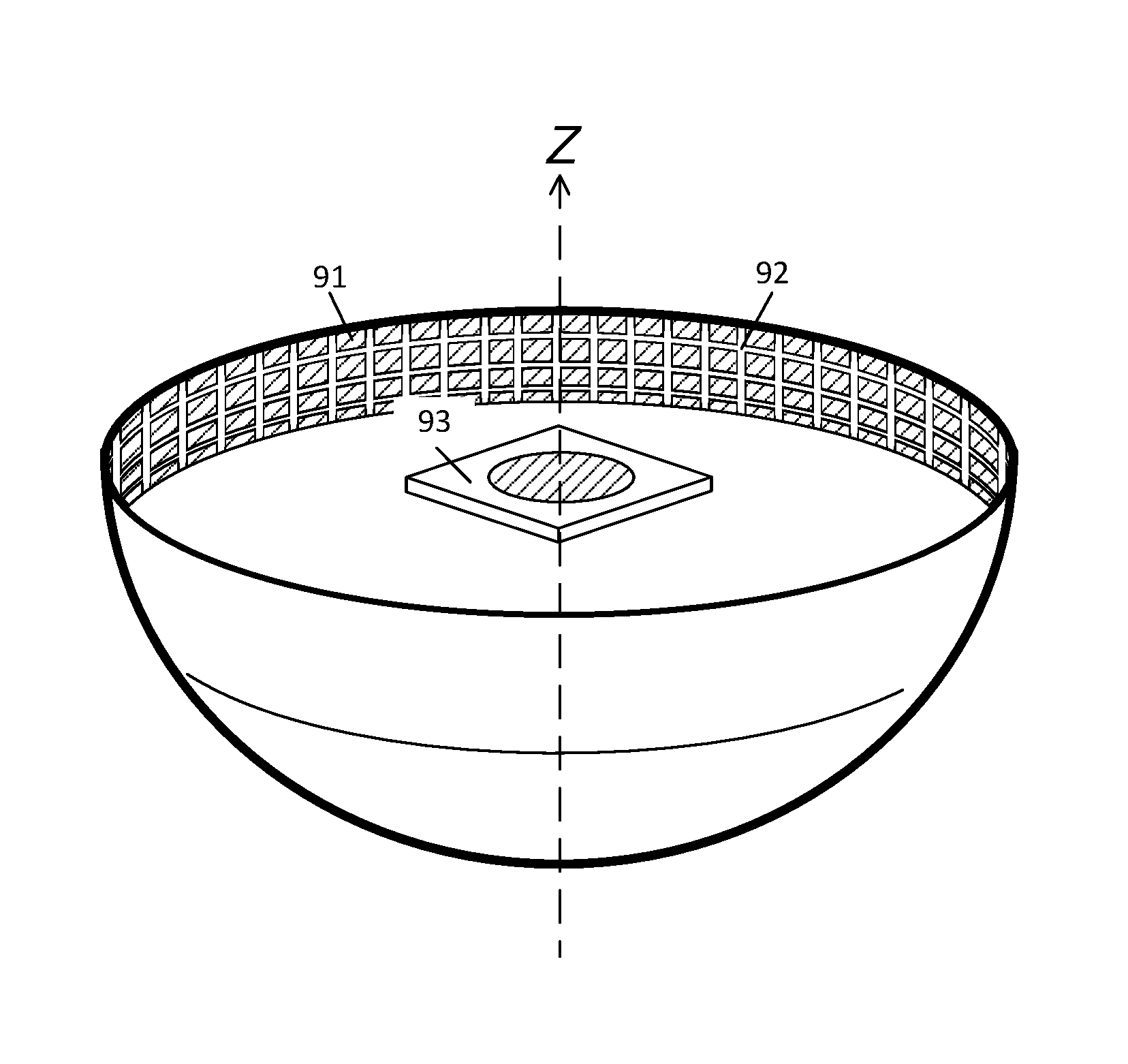

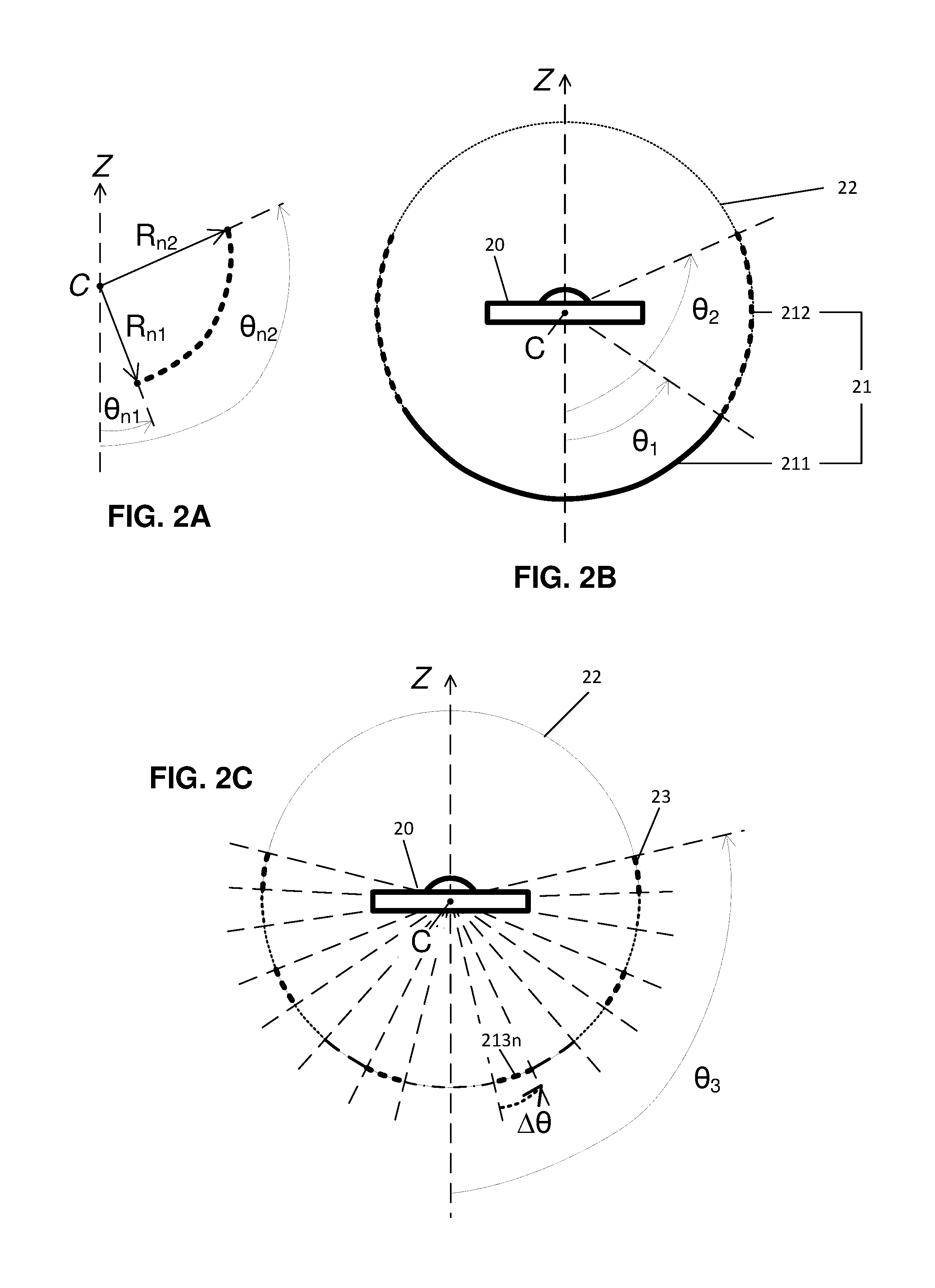

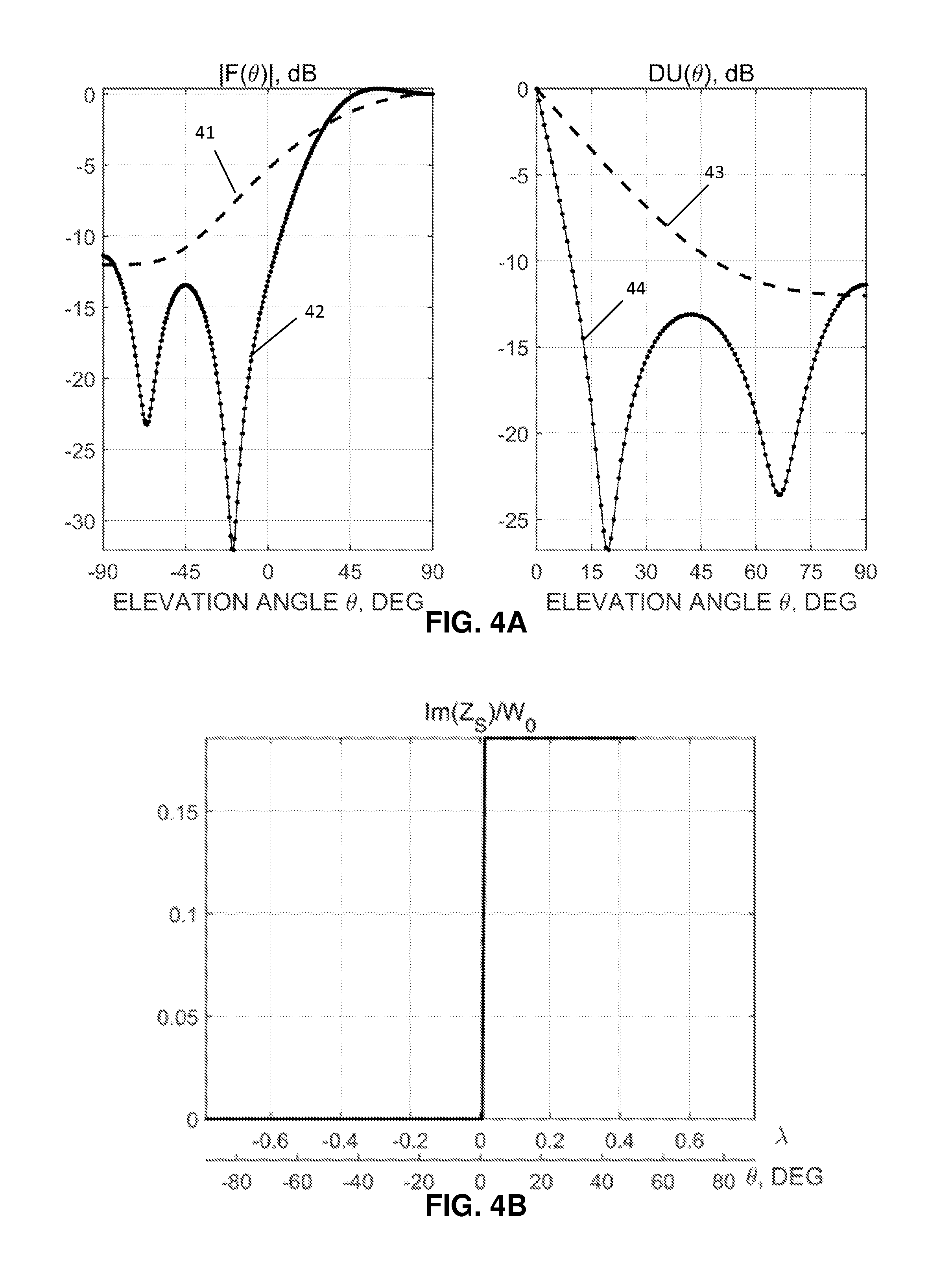
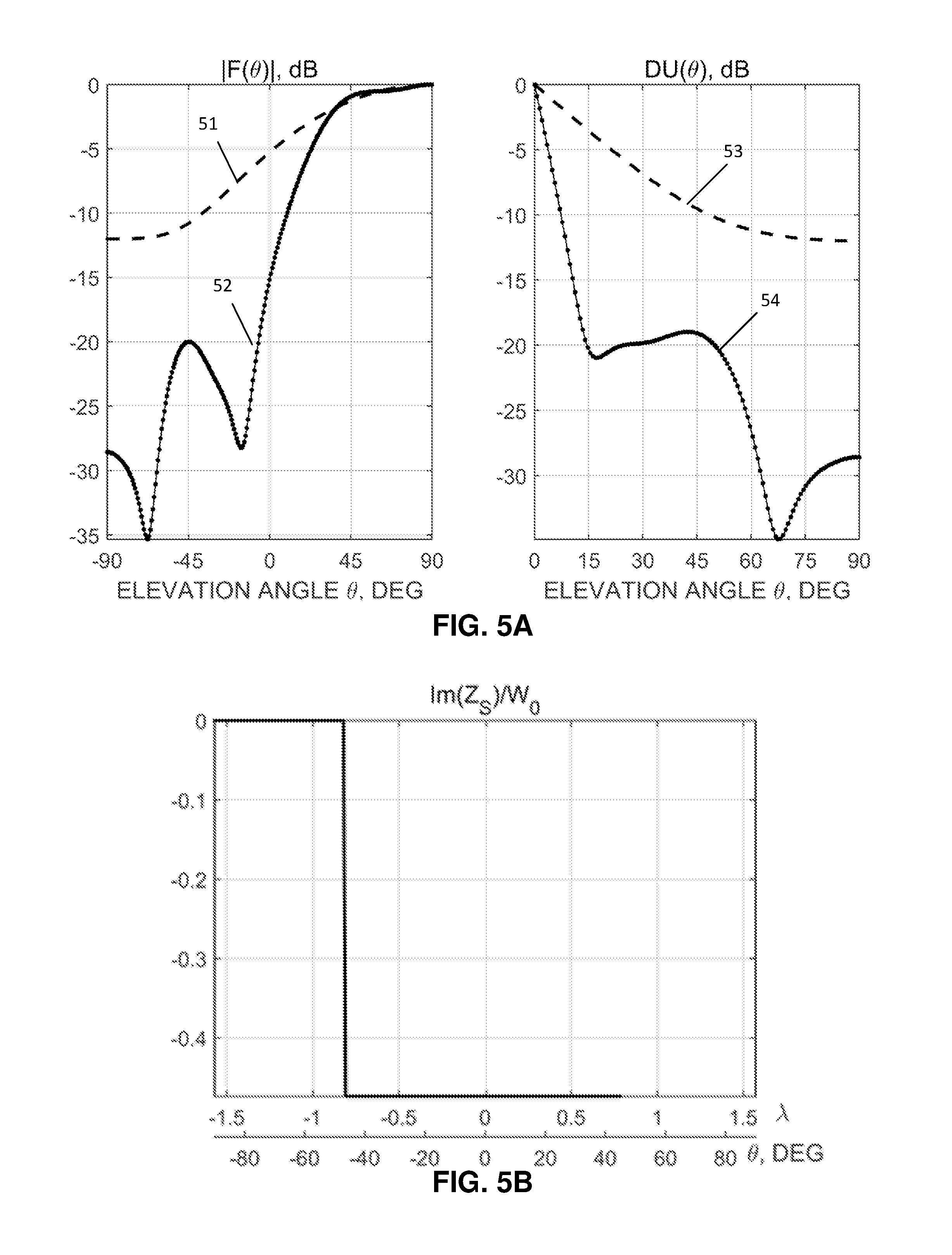


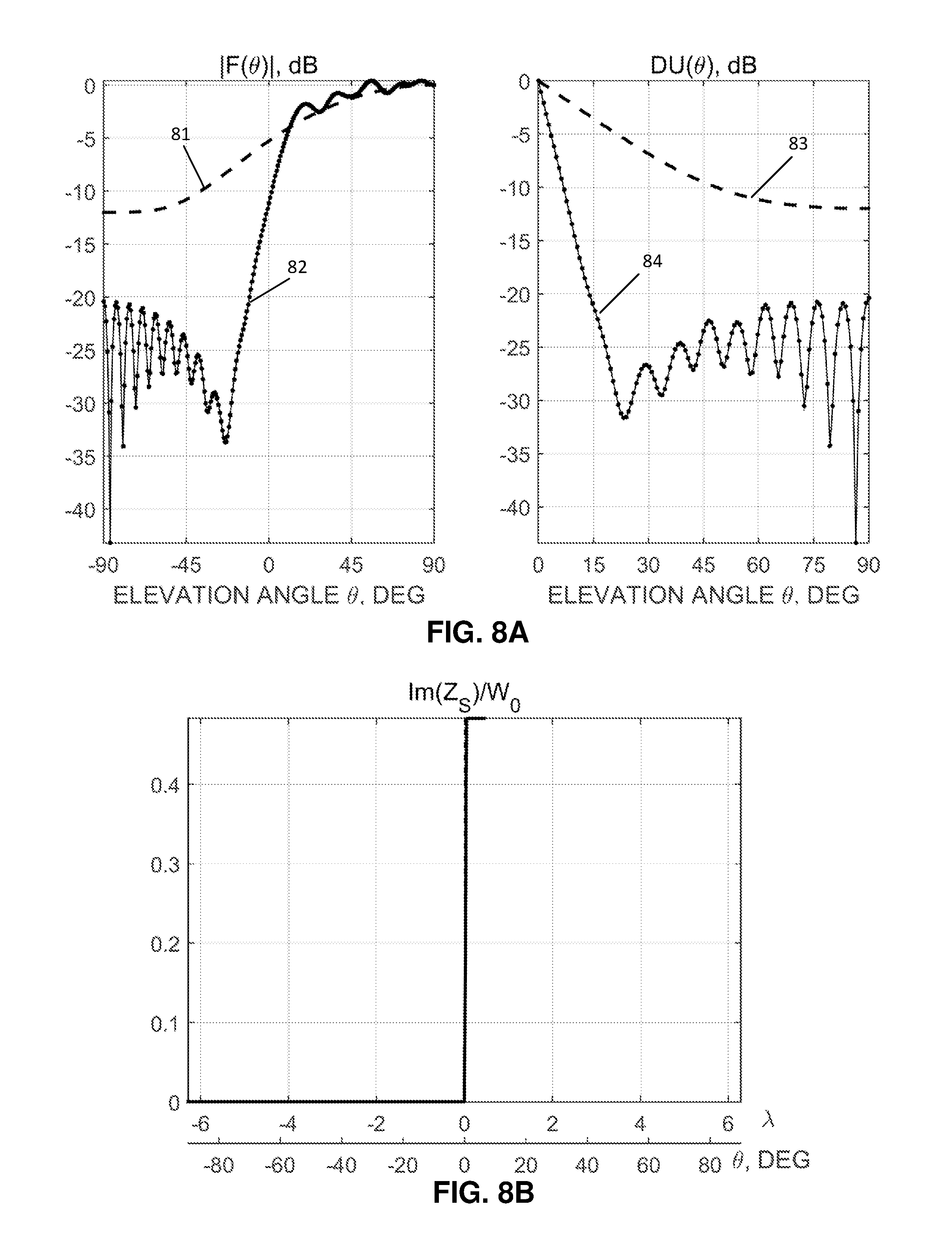
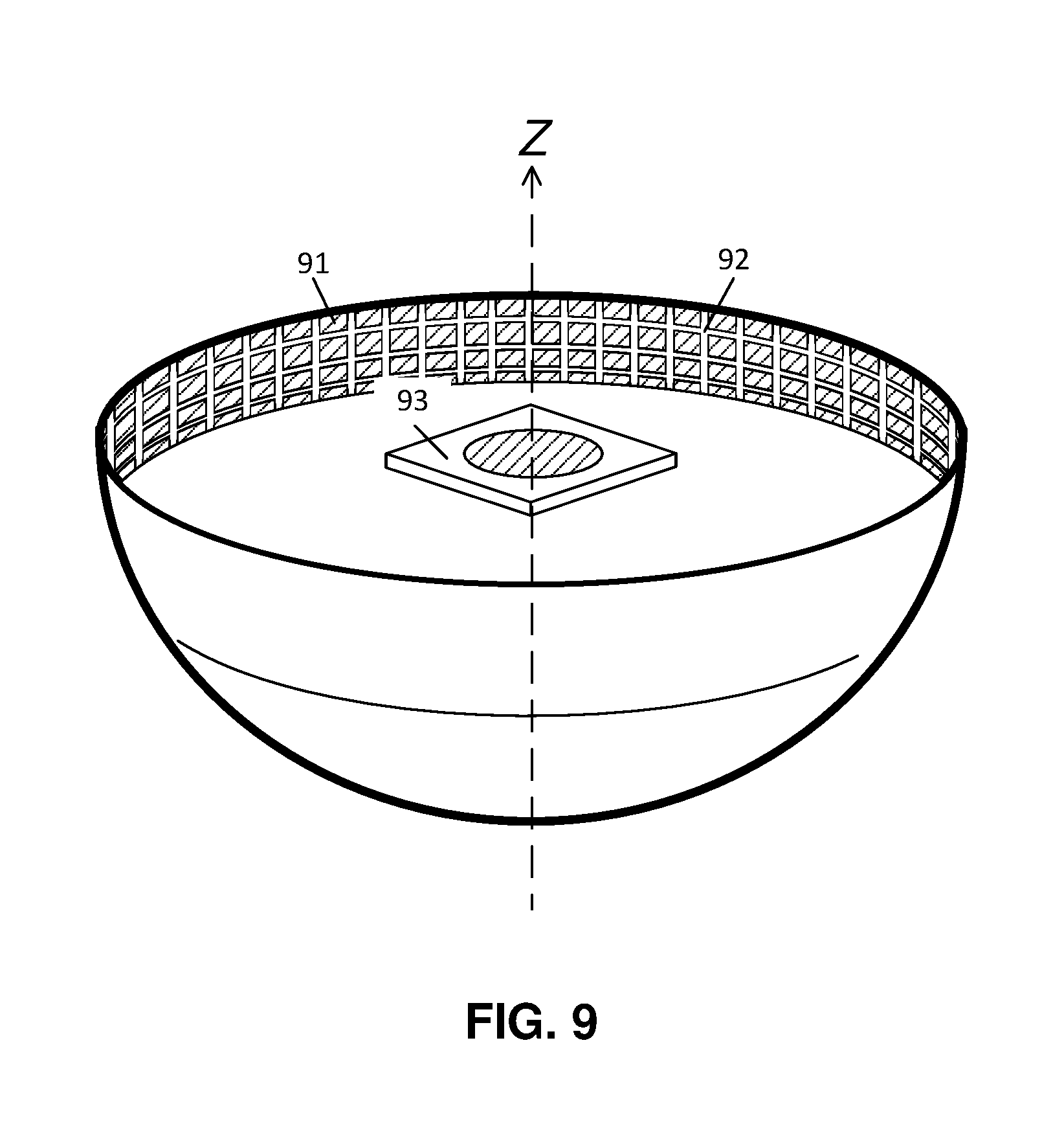

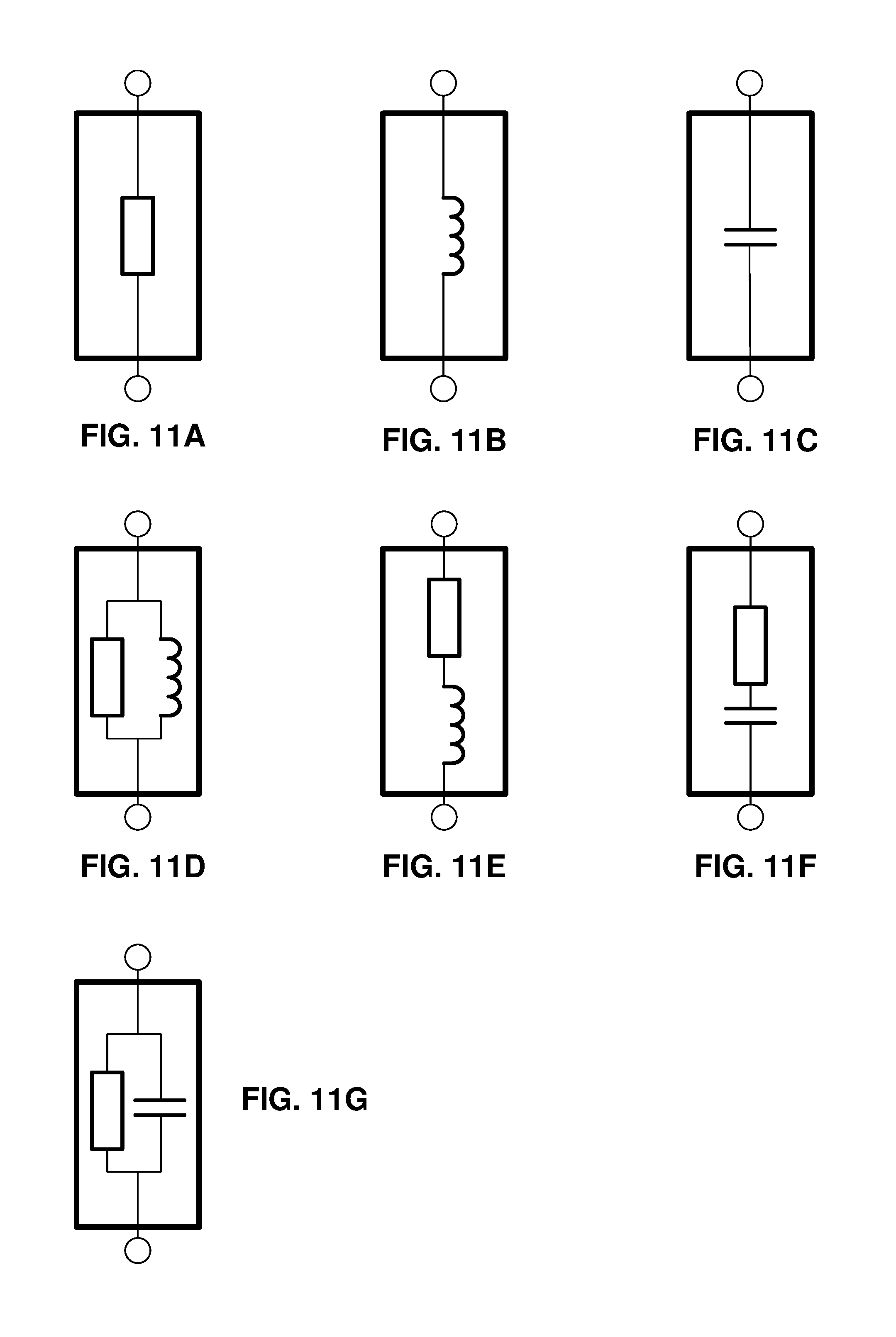
View All Diagrams
| United States Patent | 10,270,160 |
| Tatarnikov , et al. | April 23, 2019 |
Antenna radomes forming a cut-off pattern
Abstract
An antenna system includes a circularly-polarized antenna element with a Down/Up ratio in a proximity of a local horizon of no better than -12 dB. An antenna radome encloses the antenna element, the radome providing a drop of antenna pattern near a local horizon and having an upper transparent area and a lower semi-transparent area. The semi-transparent area is has a generally hemispherical shape. The semi-transparent area includes a circular metallized portion with vertical and horizontal slots, the metallized portion extending part of the way downward from an equator of the generally hemispherical shape. The metallized portion includes passive discrete electrical elements connected across at least some of the slots. The metallized portion can include multiple areas having different degrees of transparence. Each such area has a specified impedance. The discrete elements are capacitors, inductors and/or resistors. The metallized portion can have a plurality of circular rows separated by the horizontal slots.
| Inventors: | Tatarnikov; Dmitry Vitalievich (Moscow, RU), Generalov; Alexey Anatolievich (Moscow, RU), Chernetskiy; Ivan Miroslavovich (Moscow, RU) | ||||||||||
|---|---|---|---|---|---|---|---|---|---|---|---|
| Applicant: |
|
||||||||||
| Assignee: | Topcon Positioning Systems,
Inc. (Livermore, CA) |
||||||||||
| Family ID: | 60159914 | ||||||||||
| Appl. No.: | 15/124,071 | ||||||||||
| Filed: | April 27, 2016 | ||||||||||
| PCT Filed: | April 27, 2016 | ||||||||||
| PCT No.: | PCT/RU2016/000251 | ||||||||||
| 371(c)(1),(2),(4) Date: | September 07, 2016 | ||||||||||
| PCT Pub. No.: | WO2017/188837 | ||||||||||
| PCT Pub. Date: | November 02, 2017 |
Prior Publication Data
| Document Identifier | Publication Date | |
|---|---|---|
| US 20180159210 A1 | Jun 7, 2018 | |
| Current U.S. Class: | 1/1 |
| Current CPC Class: | H01Q 19/021 (20130101); H01Q 19/06 (20130101); H01Q 1/422 (20130101); H01Q 15/006 (20130101); H01Q 1/42 (20130101); H01Q 1/425 (20130101); H01Q 9/0428 (20130101) |
| Current International Class: | H01Q 1/42 (20060101); H01Q 19/06 (20060101); H01Q 15/00 (20060101); H01Q 19/02 (20060101); H01Q 9/04 (20060101) |
References Cited [Referenced By]
U.S. Patent Documents
| 4287520 | September 1981 | Van Vliet |
| 4797683 | January 1989 | Kosowsky |
| 5162809 | November 1992 | Wu |
| 5652631 | July 1997 | Bullen |
| 6323825 | November 2001 | Zidek |
| 6836247 | December 2004 | Soutiaguine |
| 7068234 | June 2006 | Sievenpiper |
| 7173565 | February 2007 | Sievenpiper |
| 7193573 | March 2007 | Durso et al. |
| 7245269 | July 2007 | Sievenpiper |
| 7554499 | June 2009 | Munk |
| 7557769 | July 2009 | Picard |
| 7649505 | January 2010 | Schadler |
| 7868829 | January 2011 | Colburn |
| 8036594 | October 2011 | Schadler |
| 8081137 | December 2011 | Chang |
| 8174450 | May 2012 | Tatarnikov |
| 8339320 | December 2012 | Sievenpiper |
| 8373597 | February 2013 | Schadler |
| 8441409 | May 2013 | Tatarnikov |
| 9123998 | September 2015 | LoRe |
| 9231299 | January 2016 | Jordan |
| 9466887 | October 2016 | Gregoire |
| 9520651 | December 2016 | Astakhov |
| 9548531 | January 2017 | Schoenlinner |
| 9564681 | February 2017 | Cordone |
| 9653815 | May 2017 | Liu |
| 9702978 | July 2017 | Tatarnikov |
| 9806410 | October 2017 | Tatarnikov |
| 9917369 | March 2018 | Stepanenko |
| 10050340 | August 2018 | Merk |
| 10153546 | December 2018 | Kolak |
| 2002/0167456 | November 2002 | McKinzie, III |
| 2003/0214456 | November 2003 | Lynch |
| 2005/0179614 | August 2005 | Nagy |
| 2006/0114170 | June 2006 | Sievenpiper |
| 2009/0109115 | April 2009 | Dittrich |
| 2011/0030757 | February 2011 | Lin |
| 2011/0163930 | July 2011 | De Lustrac |
| 2012/0098628 | April 2012 | Batchelor |
| 2012/0154241 | June 2012 | Tatarnikov |
| 2013/0222200 | August 2013 | Ju |
| 2014/0118217 | May 2014 | Cannon |
| 2014/0118218 | May 2014 | Jordan |
| 2015/0015451 | January 2015 | Tatarnikov |
| 2015/0130671 | May 2015 | Cordone |
| 2015/0255877 | September 2015 | Liu |
| 2016/0252621 | September 2016 | Astakhov |
| 2016/0268691 | September 2016 | Tatarnikov |
| 2017/0201017 | July 2017 | Cordone |
| 2017/0237159 | August 2017 | Tatarnikov |
| 2017/0358863 | December 2017 | Stepanenko |
| 2017/0363747 | December 2017 | Tatarnikov |
| 2018/0017664 | January 2018 | Toyao |
Other References
|
Search Report in PCT/RU2016/000251, dated Jan. 23, 2017. cited by applicant. |
Primary Examiner: Levi; Dameon E
Assistant Examiner: Alkassim, Jr.; Ab Salam
Attorney, Agent or Firm: Bardmesser Law Group
Claims
What is claimed is:
1. An antenna system comprising: a circularly-polarized antenna element with a Down/Up ratio between 0.degree. and 12.degree. relative to a local horizon of no better than -12 dB, and an antenna radome providing a Down/Up ratio of -20 dB or better starting from 12.degree. and having transparent and semi-transparent areas, the transparent area being above the semi-transparent area.
2. The antenna system of claim 1, wherein the semi-transparent area contains multiple parts having different degrees of transparence.
3. The antenna system of claim 2, wherein each part of the semi-transparent area includes a set of slots with a specified impedance.
4. The antenna system of claim 3, wherein the semi-transparent area can comprise a set of vertical slots and a set of horizontal slots.
5. The antenna system of claim 4, wherein the radome includes a plurality of discrete elements providing the specified impedance.
6. The antenna system of claim 5, wherein the discrete elements include any of capacitors, inductors, resistors, connected in series and/or in parallel.
7. The antenna system of claim 1, wherein the semi-transparent area has a plurality of layers, each layer having a set of vertical slots and a set of horizontal slots.
8. An antenna system comprising: a circularly-polarized antenna element with a Down/Up ratio between 0.degree. and 12.degree. relative to a local horizon of no better than -12 dB, and an antenna radome enclosing the antenna element, the radome providing a Down/Up ratio of -20 dB or better starting from 12.degree. and having an upper transparent area and a lower semi-transparent area, wherein the semi-transparent area is has a generally hemispherical shape, and wherein the semi-transparent area includes a circular metallized portion with vertical and horizontal slots, the metallized portion extending part of the way downward from an equator of the generally hemispherical shape, and wherein the metallized portion includes passive discrete elements connected across at least some of the slots, and wherein the metallized portion has a plurality of circular rows separated by the horizontal slots.
9. The antenna system of claim 8, wherein the metallized portion includes multiple areas having different degrees of transparence.
10. The antenna system of claim 9, wherein each area of the metallized portion has a specified impedance.
11. The antenna system of claim 8, wherein the discrete elements include any of capacitors, inductors, resistors, connected in series and/or in parallel.
Description
BACKGROUND OF THE INVENTION
Field of the Invention
This invention relates to antennas and antenna radomes.
Description of the Related Art
Global navigation satellite systems (GNSS) are widely used for high-precision positioning, such as the US Global Positioning System (GPS) and Russian global navigation system GLONASS, as well as some others. A GNSS antenna has to provide signal reception in the entire GNSS range, namely, a low-frequency band 1164-1300 MHz and a high-frequency band 1525-1610 MHz.
One of the most important positioning errors in GNSS systems is a so-called multipath error, when a signal reflected from the underlying ground surface appears at the input of the receiving antenna along with the line-of-sight signal.
The value of the multipath error is proportional to the ratio
.function..theta..function..theta..function..theta. ##EQU00001##
This ratio is normally called the Down/Up ratio. In this ratio, .theta. is the elevation angle over the local horizon, and F(+/-.theta.) is the antenna pattern (AP) value at angle .theta. above and under the local horizon (.theta.=0.degree.) correspondingly (relative to a maximum, and usually measured in dB). A spatial region where .theta.>0 is the upper or front hemisphere, otherwise, a spatial region at .theta.<0 is called the lower or backward hemisphere.
To provide a stable and reliable operation of positioning systems, quality signal reception from all satellites over the local horizon is required. The value F(.theta.) in the upper hemisphere should not vary highly. At the same time, the value F(.theta.) in the lower hemisphere should be as small as possible. So the value F(.theta.) should have a sharp drop in the vicinity of the local horizon (i.e., near .theta.=0.degree.).
Receiving antennas thus need to provide such an AP whose level varies negligibly in the upper hemisphere, sharply drops when crossing the direction to the local horizon, and is small in the lower hemisphere. Also, such an antenna pattern needs to be provided over entire operational frequency range.
SUMMARY OF THE INVENTION
Accordingly, the present invention is directed to antenna radomes with cut-off patterns that substantially obviate one or more of the disadvantages of the related art.
An antenna system with a pattern whose level varies slightly in the upper hemisphere, drops in the direction of the local horizon, and is small in the lower hemisphere, over the entire desired frequency range. The antenna system includes a circularly-polarized antenna element placed inside a radome. The antenna element is to have a Down/Up ratio in a proximity of a local horizon of no better than -12 dB (The radome consists of some parts made from materials with different transparency. The basis of the proposed invention is a phenomenon of interference of the passed and diffractive fields in the shadow area, which has been formed by radome's semi-transparent surface. Due to using semi-transparent materials, one can control field interference, thereby shaping a desired antenna pattern for the proposed antenna system.
In another embodiment, there is provided an antenna system with a circularly-polarized antenna element with a Down/Up ratio in a proximity of a local horizon of no better than -12 dB, and an antenna radome providing a drop of antenna pattern near a local horizon and having transparent and semi-transparent areas, the transparent area being above the semi-transparent area. Optionally, the semi-transparent area contains multiple parts having different degrees of transparence. Optionally, each part of the semi-transparent area includes a set of slots with a specified impedance. Optionally, the semi-transparent area can comprise a set of vertical slots and a set of horizontal slots. Optionally, the radome includes a plurality of discrete elements providing the specified impedance. Optionally, the discrete elements include any of capacitors, inductors, resistors, connected in series and/or in parallel. Optionally, the semi-transparent area has a plurality of layers, each layer having a set of vertical slots and a set of horizontal slots.
In another embodiment, there is provided an antenna system includes a circularly-polarized antenna element with a Down/Up ratio in a proximity of a local horizon of no better than -12 dB, and an antenna radome enclosing the antenna element, the radome providing a drop of antenna pattern near a local horizon and having an upper transparent area and a lower semi-transparent area, The semi-transparent area is has a generally hemispherical shape, the semi-transparent area includes a circular metallized portion with vertical and horizontal slots, the metallized portion extending part of the way downward from an equator of the generally hemispherical shape, The metallized portion includes passive discrete elements connected across at least some of the slots. The metallized portion has a plurality of circular rows separated by the horizontal slots. Optionally, wherein the metallized portion includes multiple areas having different degrees of transparence. Optionally, each area of the metallized portion has a specified impedance. Optionally, the discrete elements include any of capacitors, inductors, resistors, connected in series and/or in parallel.
Additional features and advantages of the invention will be set forth in the description that follows, and in part will be apparent from the description, or may be learned by practice of the invention. The advantages of the invention will be realized and attained by the structure particularly pointed out in the written description and claims hereof as well as the appended drawings.
It is to be understood that both the foregoing general description and the following detailed description are exemplary and explanatory and are intended to provide further explanation of the invention as claimed.
BRIEF DESCRIPTION OF THE ATTACHED FIGURES
The accompanying drawings, which are included to provide a further understanding of the invention and are incorporated in and constitute a part of this specification, illustrate embodiments of the invention and together with the description serve to explain the principles of the invention.
In the drawings:
FIG. 1 shows a conditional space division into upper and lower hemispheres and a conditional view of incident and reflected waves.
FIG. 2A shows designations used in the text.
FIGS. 2B-2C schematically show one of embodiments for antenna system design.
FIGS. 3A-3B show graphs |F(.theta.)| and DU(.theta.) for a surface radius of R=0.25.lamda., and corresponding impedance distribution along the surface.
FIGS. 4A-4B show graphs |F(.theta.)| and DU(.theta.) for a surface radius of R=0.5.lamda., and corresponding impedance distribution along the surface.
FIGS. 5A-5B show graphs |F(.theta.)| and DU(.theta.) for a surface radius of R=.lamda. and corresponding impedance distribution along the surface.
FIG. 6A-6B show graphs |F(.theta.)| and DU(.theta.) for a surface radius of R=2.lamda. and a variant of corresponding impedance distribution along the surface accordingly.
FIGS. 7A-7B shows graphs |F(.theta.)| and DU(.theta.) for a surface radius of R=2.lamda., and another variant of corresponding impedance distribution along the surface accordingly.
FIGS. 8A-8B show graphs |F(.theta.)| and DU(.theta.) for a surface radius of R=4.lamda. and corresponding impedance distribution along the surface.
FIG. 9 schematically shows one of the embodiments of the radome design.
FIGS. 10A-10C show a schematic view of implementing semi-transparent surface.
FIGS. 11A-11G show a schematic view of embodiments for elements with user defined impedance.
FIG. 12 shows a schematic structure of one embodiment for multilayer semi-transparent surface.
FIG. 13 shows an embodiments for antenna system design having only horizontal slots
FIG. 14 shows an embodiments for antenna system design having only vertical slots.
FIG. 15 shows a schematic view of a segment of semi-transparent surface
DETAILED DESCRIPTION OF THE PREFERRED EMBODIMENTS
Reference will now be made in detail to the preferred embodiments of the present invention, examples of which are illustrated in the accompanying drawings.
As shown in FIG. 2B, the proposed antenna system consists of an antenna 20 and radome 21. Radome design has a symmetry relative to the vertical axis Z passing through center C of the antenna system.
The radome includes two segments--a semi-transparent segment 21 and transparent segment 22. The semi-transparent segment 21 is made of semi-transparent material. Semi-transparency here means the property of partial reflection and partial passing-through of electromagnet radiation. Numerical characteristics of such materials and a method of their implementation is given below. The transparent segment 22 is made of radio-transparent material, for example, thin dielectric with permeability close to 1. The transparent segment 22 is located above the semi-transparent one 21.
According to FIG. 2C, the semi-transparent segment in turn includes a set of parts. Each part of the semi-transparent segment differs from other parts in a user-defined capability of passing-through and reflecting electromagnetic waves and is situated on a surface formed by rotation an arc about the vertical axis Z. FIG. 2A shows that each arc has its starting and ending point. The starting point is characterized by distance R.sub.n1 from the radome center C and angle .theta..sub.n1 being counted from the vertical axis Z. The ending point is characterized by distance R.sub.n2 from the radome center C and angle .theta..sub.n2 counted from the vertical axis Z. The starting arc point with number n+1 matches the ending arc point with number n. Here, n is the number of the corresponding part. Note that arcs can be both convex and concave.
A spherically shaped embodiment of the radome design is further described. A semi-transparent segment of the radome is a part of a sphere with radius R and center at point C. It includes two parts. The first part--211--is formed by an arc starting from the vertical axis and characterized by radius R and angle .theta..sub.1. This part is made of nontransparent material that fully reflects or partly absorbs (with an angular dependency) electromagnetic radiation.
The second part of the semi-transparent segment 212 is formed by an arc of radius R, which starts at angle .theta..sub.1 and ends at angle .theta..sub.2. Angular dimension of the arc is .theta..sub.2-.theta..sub.1. Angle .theta..sub.2 can take values greater than or equal to .theta..sub.1. If the angles are the same, there is no semi-transparent surface in the design.
A transparent segment of the radome design 22 is located on an arc, which, together with the arcs of the semi-transparent segment 21, form a half of circle such that a sphere can be formed by rotating said arcs about the vertical axis. The segment is made of radio-transparent material. A criterion of referring to transparent, semi-transparent and nontransparent quality of a surface is given below.
Interaction of electromagnetic waves with semi-transparent surfaces can be characterized by a parameter called the layer impedance and designated by Z.sub.S. The impedance can be presented in the form of a sum Z.sub.S=R.sub.S+iX.sub.S, where R.sub.S, X.sub.S are active and reactive parts correspondingly. At X.sub.S>0 impedance is inductive. At X.sub.S<0, the impedance is capacitive. Components R.sub.S, X.sub.S are conveniently measured in relative units, fractions of the universal constant W.sub.0=120.pi. Ohm (which is the free-space characteristic impedance). When |Z.sub.S|>>W.sub.0, the surface can be regarded as fully transparent. When |Z.sub.S|<<W.sub.0 the surface is regarded as nontransparent, fully reflecting electromagnetic waves similar to metals. When R.sub.S.noteq.0, the surface partly absorbs electromagnetic waves. By selecting the desired layer impedance one can provide a required degree of passing electromagnetic radiation, its reflection and absorption, thereby affecting the interference mode of fields being passed-through and diffracted. When |Z.sub.S|.about.W.sub.0, the surface is considered semi-transparent.
Antennas used in satellite positioning operate mainly in receiving mode, but in many cases it is practical to consider their characteristics in passing-through mode. The identity of antenna characteristics both in receiving and passing-through modes is proved by the reciprocity principle.
Calculations were done for a two-dimensional problem of diffracting a source field on a cylindrical surface of a certain radius R. The radiation of the source was assumed to be uniform in the range of angles .gtoreq.0, and in the range of .theta.<0 the radiation was suppressed. AP and Down/Up ratio for such a source are presented in FIGS. 3A-8A by dotted lines 31, 33, 41, 43, 51, 53, 61, 63, 71, 73, 81, 83, which correspond to typical positioning AP. The obtained layer impedance distributions for surface radii
.lamda. ##EQU00002## are given in FIGS. 3B, 4B, 5B, 8B, correspondingly. For R=2.lamda. there are given distributions in FIGS. 6B, 7B. FIGS. 3A-8A show antenna patterns and Down/Up ratios for the obtained impedance distributions with solid lines 32, 34, 42, 44, 52, 54, 62, 64, 72, 74, 82, 84.
Radome design shown in FIG. 2B does not allow for a considerable improvement in characteristics for small surface radii (R<.lamda.), hence a periodically-variable surface distribution is proposed which corresponds to a semi-transparent surface 23 with segments 213n and angle arc of .DELTA..theta. shown in FIG. 2C. The corresponding example is given for R=0.25.lamda.. Impedance distribution presented in FIG. 3B enables to reach a considerable AP drop in the direction to the local horizon, see FIG. 3A. For radii R=0.5 . . . 4.lamda., characteristics were improved by using a radome design shown in FIG. 2B. The best embodiment was obtained when R=2.lamda.. Impedance distributions and characteristics |F(.theta.)| and DU(.theta.) achieved are given in FIGS. 7B and 7A correspondingly.
FIG. 9 shows one of the radome embodiments. A semi-transparent area can contain one semi-transparent surface. To implement such a semi-transparent surface with the user-defined impedance distribution, a metal surface 91 is selected with a set of slots 92, to which elements with user-defined impedance, such as inductors, capacitors, and/or resistors, are connected. Discrete elements not shown in the figure. 93 is a regular patch antenna. Different embodiments of such a semi-transparent surface are shown in FIGS. 10A-10C. Examples of these elements are shown in FIGS. 11A-11G.
FIG. 10A shows a semi-transparent surface 101 with a set of horizontally-located slots 1011. FIG. 10B presents a semi-transparent surface 102 with a set of vertically-located/vertical slots 1021, and FIG. 10C shows a semi-transparent surface 103 with a set of both horizontal slots 1031 and vertical slots 1032. All these slots are connected to elements 104 with user defined impedance. FIGS. 11A-11C present examples of implementing elements 104. These elements can contain resistors, inductors, capacitors and their connections (serial or parallel).
Both lumped and shared-circuit elements can be used as capacitors, resistors and inductors. Nominal values of these elements are selected based on the condition of suppressing field interference in the lower hemisphere at the required bandwidth.
The width of slots is defined by a convenient installation of elements containing resistors, inductors and capacitors. For example, for lumped elements the width of the slot is determined by the size of the corresponding components.
The semi-transparent area can include several layers. The structure of each layer corresponds to the structure of semi-transparent surfaces shown in FIGS. 10A-10C. An example of implementing such areas is shown in FIG. 12, where 1201, 1202 and 1203 are the layers of the semi-transparent area. The layer can be made, for example, as a printed circuit board (PCB). Elements with user-defined impedance are not shown in the figure.
Below there are parameters of one radome embodiment, the use of which enable to reach DU(.theta.) ratio better than -20 dB starting from angle .theta.=12.degree. in the lower hemisphere relative to the horizon. R=2.lamda.,.theta..sub.1=0.52.pi.,.theta..sub.2=0.74.pi.,Z.sub.S=-i0.5W.s- ub.0,
where R is the radius of the spherical radome, .theta..sub.1, .theta..sub.2 are the angles in terms of FIG. 2B, Z.sub.S is the impedance of the semi-transparent area.
FIG. 13 shows an embodiment for antenna system design having only horizontal slots 131. Discrete elements not shown in the figure. 132 is a regular patch antenna.
FIG. 14 shows an embodiment for antenna system design having only vertical slots. Discrete elements not shown in the figure. 142 is a regular patch antenna.
FIG. 15 shows a segment of semi-transparent surface. Parameters of an embodiment in terms of FIG. 2A and FIG. 2B: semi-spherical radome; R=380 mm; .THETA..sub.1=88.degree.; .THETA..sub.2=97.degree.; Z.sub.S=i0.6W.sub.0. The radome is a PCB board having metallization only on one side of the board. The width 153 of the semi-transparent segment is 60 mm. The semi-transparent segment includes a set of horizontal slots 151 each 1 mm in width. The distance 155 between two adjusted slots is 4 mm. There is a set of 8.2 nH inductors 152 connected to each slot. The distance 154 between adjusted inductors along a slot is 10 mm.
Having thus described a preferred embodiment, it should be apparent to those skilled in the art that certain advantages of the described method and system have been achieved. It should also be appreciated that various modifications, adaptations, and alternative embodiments thereof may be made within the scope and spirit of the present invention. The invention is further defined by the following claims.
* * * * *
D00000

D00001

D00002

D00003

D00004

D00005

D00006

D00007

D00008

D00009

D00010

D00011

D00012
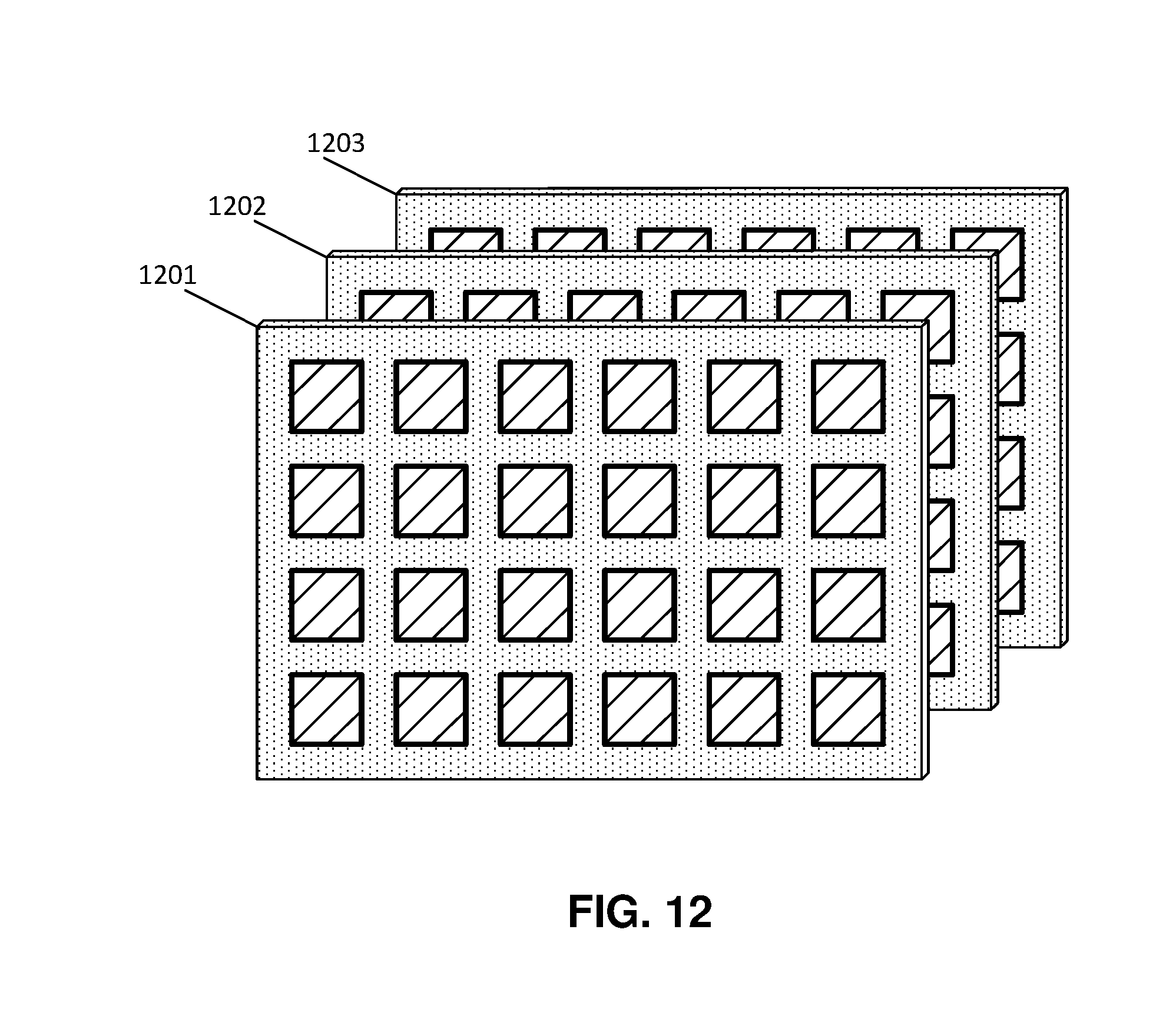
D00013

D00014
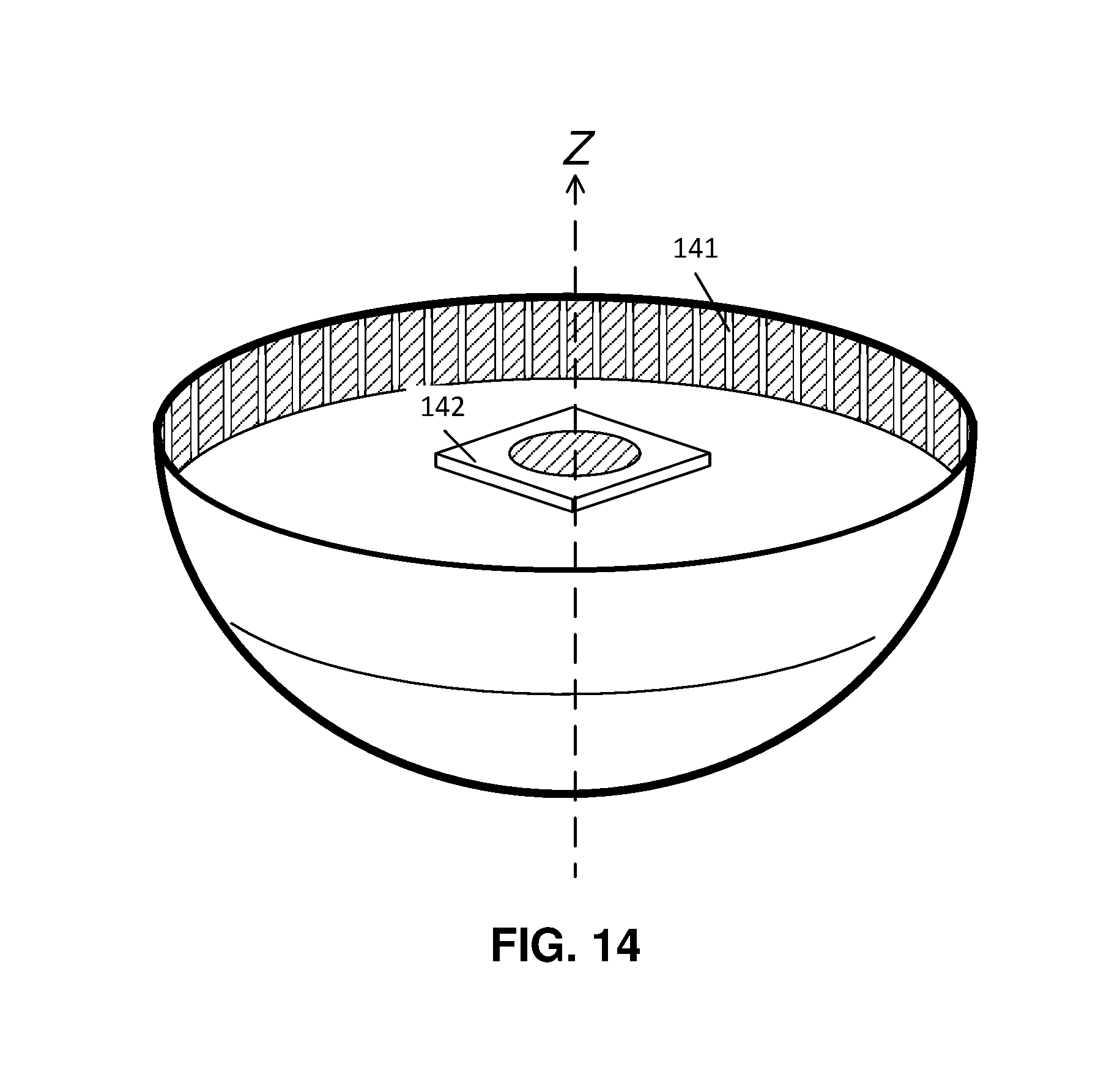
D00015

M00001

M00002

XML
uspto.report is an independent third-party trademark research tool that is not affiliated, endorsed, or sponsored by the United States Patent and Trademark Office (USPTO) or any other governmental organization. The information provided by uspto.report is based on publicly available data at the time of writing and is intended for informational purposes only.
While we strive to provide accurate and up-to-date information, we do not guarantee the accuracy, completeness, reliability, or suitability of the information displayed on this site. The use of this site is at your own risk. Any reliance you place on such information is therefore strictly at your own risk.
All official trademark data, including owner information, should be verified by visiting the official USPTO website at www.uspto.gov. This site is not intended to replace professional legal advice and should not be used as a substitute for consulting with a legal professional who is knowledgeable about trademark law.